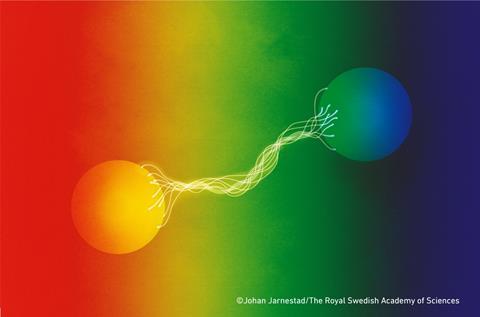The Nobel Prize in Physics goes to Alain Aspect, John Clauser and Anton Zeilinger for research on quantum entanglement of photons, the Nobel Prize Committee reports.

Specifically, the Frenchman, American and Austrian won “for experiments on entangled photons, establishing the violation of Bell inequalities and pioneering work in quantum information science”. Those Bell inequalities originated with John Stewart Bell, who devised the mathematical inequality. Bell argued that if there are so-called hidden variables, then the correlation between the results of a large number of measurements would never exceed a certain value. But quantum mechanics predicted that a given experiment violates that inequality.

John Clauser elaborated on this. When he made measurements, they supported quantum mechanics by violating the Bell inequality, meaning you cannot replace quantum mechanics with a theory with hidden variables.
Alain Aspect then closed an important loophole, as he was able to switch the measurement settings after an entangled pair had left its source, so the setting that existed when they were emitted could not affect the result.
Using refined tools and long series of experiments, Anton Zeilinger started to use entangled quantum states. Among other things, his research group has demonstrated a phenomenon called quantum teleportation, which makes it possible to move a quantum state from one particle to one at a distance.
Press release: The Nobel Prize in Physics 2022. NobelPrize.org. Nobel Prize Outreach AB 2022. Tue. 4 Oct 2022.












Nog geen opmerkingen